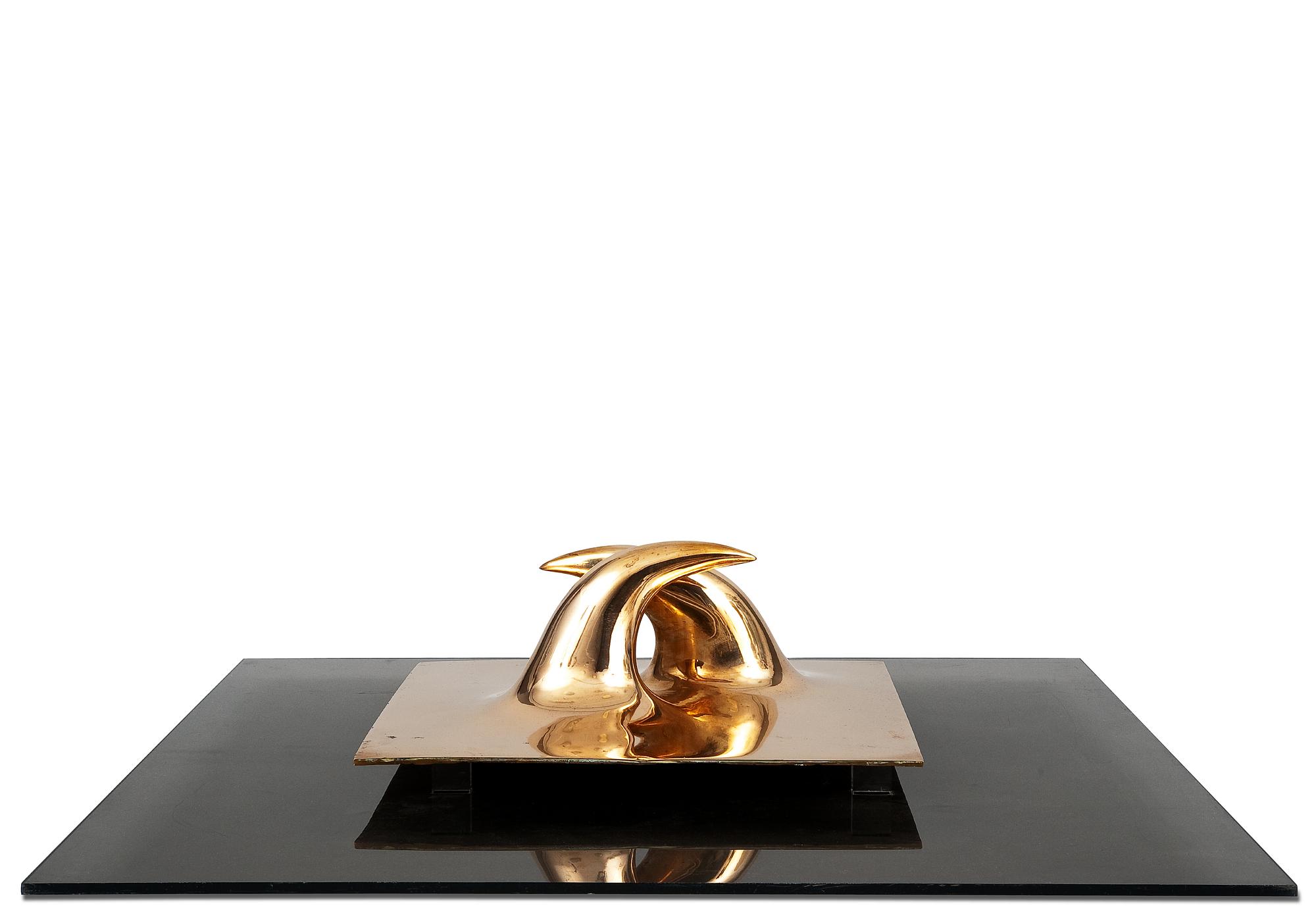Björn Weckström
SCULPTURE, HORNS.
Signed. BW, 71 1/1. Bronze 55,5x54,5 cm, attached to an acrylic base 110x110 cm.
More information
The sculptor Björn Weckström
Björn Weckström (born 1935) began his artistic production in the mid-1950s as a goldsmith. The overarching idea that permeates his jewellery design is that of three-dimensional miniature sculptures. In the 1960s Weckström became interested in larger elements and sculpting. Already as a child, he dreamt of becoming a sculptor, and so it felt natural to grasp this new opportunity when it arose.
In the beginning of the 1970s, Weckström became fascinated by relief as a technique, bronze as a material, and abstract expression. Together, they enabled him to explore the surface of the material, its reflections and shapes. His work began taking on primitive, archaic traits that exuded magic and elemental force. Ancient stone formations such as Stonehenge served as inspiration. His sculptures encourages the viewer to pause and focus; the timeless serenity emanating from the works invites the viewer to momentarily let go of the demands of everyday life. The abstract forms contain familiar elements that can be freely interpreted.
In the sculpture ”Twisted form” the molten bronze twists like a lock of hair in the wind before solidifying. The work was ordered by Suomen Kähertäjäliitto (The Finnish Hairdressers' Association, freely translated) and cast in a limited series. The movement is captured in a manner typical of Weckström – his observations of the world often mirror natural phenomena. The sculpture can be interpreted in multiple ways; for example one might sense the spiral outline of a shell in the curve of the bronze. For Weckström, nature is a never ending source of inspiration and power. Bone and horn are recurring themes throughout his production, for example in the sculpture ”Horns” which is a unique sculpture belonging to a series of 12 bronze reliefs from the beginning of the 1970s. The majority of the series was sold to the United States, some found homes in Europe, and the remainder stayed in Finland.
The abstract shapes of the 1960s and 1970s crossed over into realism by the advent of the 1980s. The style, often described as”contemplative realism”, depicts humanoid shapes and their encounters with societal phenomena as Weckström analyzes the contemporary world around him. Many of the sculptures from this era are reinterpretations of classic mythology. ”Narkissos” represents the human longing for celebrity at any cost;”Ikaros” conveys the urge to fly despite the knowledge that the venture will prove fatal. In 1990 Weckström returns to the theme once again, proving just how timeless the myths are. The work”Centauri”, depicting a modern Centaur with the upper body of a human and a lower body in the shape of a motorcycle, explores the symbiotic co-existence of man and machine. Weckström's intention seems to be to awaken mankind to the reality of its own rapid trajectory towards destruction, a state of mind where nothing is ever enough.
In Florence, in 1981, Weckström saw the only recently discovered and restored Riace bronzes – an eye-opening experience. They instilled in him a firm conviction that the central themes of ancient mythology are still relevant. The polished bronze of many of his works also hails from antiquity. Weckström has spent most of his working life in Toscana where the light, the atmosphere, and the conditions for working with large bronze sculptures are all ideal.
Besides bronze, Weckström has used a multitude of materials such as marble, acrylic, glass and many progressive combinations of the above to create his sculptures.
M.A. Mari Wilenius












































